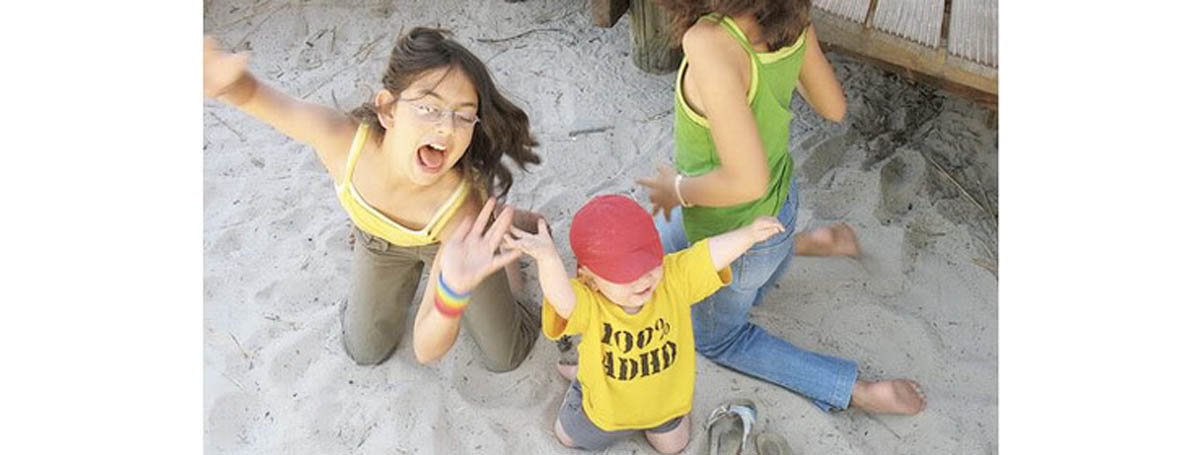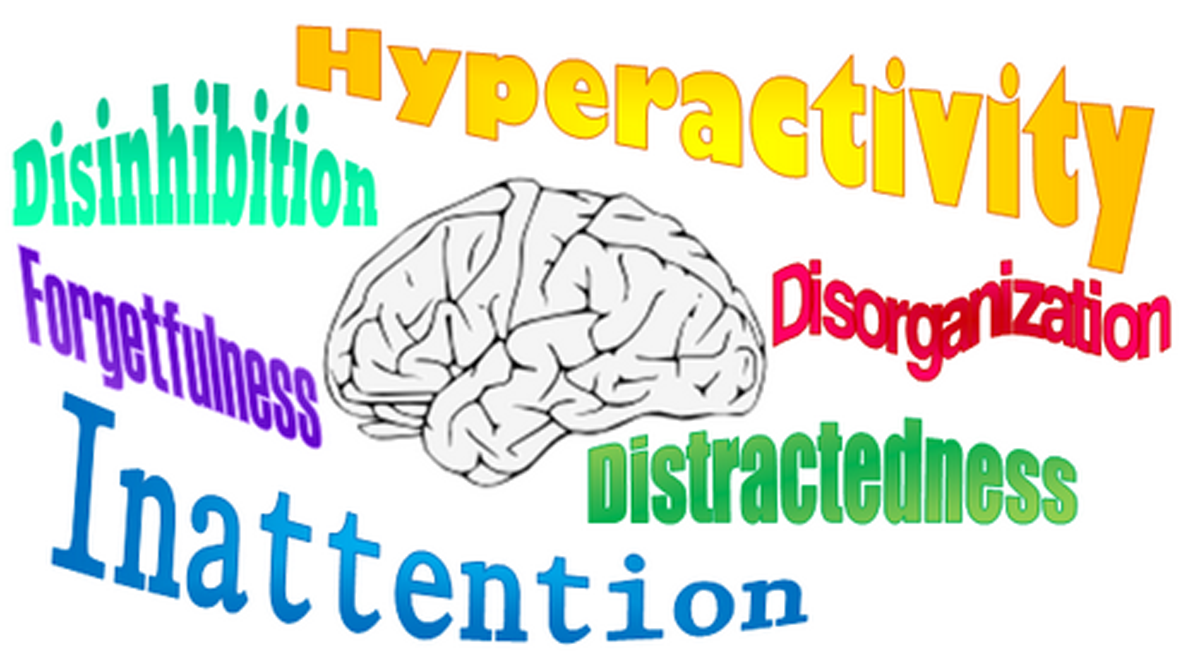Everyone has heard about ADHD, and most "know" that it has something to do with annoying, hyperactive kids. But what is Attention Deficit Hyperactivity Disorder really? What symptoms does someone have to have to "qualify" for an ADHD diagnosis? How is ADHD treated — to be more precise, do people with ADHD need drugs to fit in?

It's September, the month in which the school year starts in most places, and a fitting time to bring attention to ADHD through National Attention Deficit Hyperactivity Disorder Month. Here at SteadyHealth, we want you to know all about this commonly misunderstood disorder.
Life With ADHD
Chana, now a middle-aged professional woman, always felt different — she was easily distracted, started projects with enthusiasm but seemingly never managed to finish them, and literally had to move all the time. "At least one leg had to be moving," she says. "The external had to match was was going on in my head: too much at the same time."
Though Chana finished college, she always felt like an underachiever and her constant hyperactivity made sure she had a hard time at school and at home. She figured out she had ADHD after a friend pointed her to an online self-diagnosis test 10 years ago. After the test, she sought medical help and now manages her ADHD with the help of a fish oil formulation. "I can finally concentrate, and the leg movements have stopped too."
ADHD has many faces, and Chana certainly isn't the hyperactive, aggressive elementary-aged kid that most people expect to hear about when they hear "Attention Deficit Hyperactivity Disorder". Sam's son matches that picture more closely. "Our boy was born prematurely," he says. "It became clear that he was different pretty early on. When we enrolled him in preschool at age four, the teacher complained immediately. Our son would not listen to anyone, could not stay seated even for short periods of time, and was aggressive. He'd hit instead of trying to talk."
At the school's insistence, Sam and his wife (who are from Europe) sought help from a psychiatrist. He was diagnosed with ADHD, but was also found to be on the autism spectrum. Disorders such as autism can go hand in hand with an ADHD diagnosis, but only of the ADHD symptoms do not occur solely within the context of the other disorder. Sam's boy is now 14 and on Ritalin, attending a special school, and doing much better.
ADHD Facts You Didn't Know
ADHD is the most common childhood psychiatric disorder. Its main characteristics are inattention, hyperactivity, and impulsivity. Doesn't that sound like any kid you know? Parents magazine and the Child Mind Institute surveyed Parents readers and found that 62 percent of the participating parents thought that ADHD was overdiagnosed. As much as 72 percent believed that doctors were too quick to put children on medication.
Some people even believe that ADHD isn't a real disorder at all, but simply normal childhood behavior. It may be true that today's doctors are too eager to diagnose ADHD and place a child on medication simply to make him or her easier to deal with. While this would certainly mean we have a problem that needs to be addressed, it is important to acknowledge that Attention Deficit Hyperactivity Disorder is a real disorder with symptoms quite different from normal childhood behaviors.
Concentration problems, hyperactivity and impulsivity may be common to all children (and adults, for that matter), but the degree and context is quite different in ADHD patients. The symptoms occur in different situations, so not just at school, just at home, or just at work.
The cause of the symptoms lies within the person, not the context.
The symptoms are manifested before age 12. They don't suddenly appear with age, though they can decrease over time with maturity. According to the American Psychiatric Association, between three and seven percent of school-aged children has ADHD. Boys are more likely to have ADHD than girls.
Research shows that 40 to 50 percent of ADHD sufferers has the disorder in combination with aggression, while around a quarter suffers from fears. Only a quarter has "pure" ADHD — but even that comes in three different types, which you can read more about on the next page.
The exact cause of ADHD remains unknown, but research has shown that the brains of people with the disorder function differently and the frontal lobe, basal ganglia, caudate nucleus, cerebellum, and other parts of the brain play a role. There is a hereditary component to ADHD as well, and environmental factors such as complications during pregnancy or birth, dysfunctional family relationships, and later on accidents or meningitis are also linked to ADHD.
ADHD Symptoms Checklist And Treatment Options
As of May 2013, mental health professionals in the United States use the American Psychiatric Association's Diagnostic and Statistical Manual, Fifth edition (DSM-5) to diagnose mental disorders, including ADHD.

Diagnostic criteria from two different groups (inattention and hyperactivity and impulsivity) must be met for a person to qualify for the ADHD diagnosis, in addition to some other more general criteria. Let's take a look.
Inattention
Six or more symptoms must be displayed by children up to 16, and five by people aged 17 and up. The symptoms must have been present for six months or more and be age-inappropriate.
- Often fails to pay close attention to detail and makes careless mistakes in various contexts.
- Often can't concentrate on the task engaged in.
- Often does not seem to listen when spoken to.
- Often fails to follow through on instructions — gets side-tracked.
- Poor organizational skills.
- Dislikes or avoids tasks that require mental effort over a period of time.
- Tends to lose things he or she needs.
- Easily distracted.
- Forgetful in daily activities.
Hyperactivity And Impulsivity
Six or more of these symptoms are required for kids up to 16, and five or more for those who are aged 17 and up. The symptoms have to be present for a minimum of six months and must be disruptive or developmentally inappropriate for the diagnosis to be made.
- Fidgets with hands or feet, taps, or squirms in seat.
- Sets up in situations where straying seated is expected.
- Often runs or climbs in inappropriate situations.
- Unable to play or participate in recreational activities quietly
- Is often "on the go" acting as if "driven by a motor".
- Tends to talk excessively.
- Often answers before a question has been completed.
- Has trouble waiting his or her turn.
- Interrupts or intrudes on others.
Additional ADHD Symptoms
Besides displaying the required number of symptoms from the two lists above, the following must also apply for an ADHD diagnosis to be made:
- Several inattentive or hyperactive-impulsive symptoms should have been present before age 12.
- Several symptoms are present regardless of context (not only, for example, at school).
- It is clear that the symptoms interfere with the person's daily life.
- The symptoms cannot be explained by another mental disorder.
There are three different types of ADHD. A combined presentation is when the person has enough symptoms from both inattentive and hyperactive/impulsive diagnostic criteria lists. A predominantly inattentive presentation applies when the sufficient number of symptoms were checked off on the inattentive list, but not on the hyperactive/impulsive checklist for the past six months. With a predominantly hyperactive/impulsive presentation, the reverse is true. It is important to know that symptoms, and thus the type of ADHD a person has, can change over time.
Treatment Options
A disorder with the characteristics of ADHD was described as early as 1798 — Attention Deficit Hyperactivity Disorder is not, contrary to popular belief, an exclusively contemporary phenomenon. What is new is that ADHD can now be managed with medication and alternative methods.
Research shows that treatment with Ritalin, a central nervous system stimulant that affects the chemicals in the brain that are related to impulse control and hyperactivity, is very effective. Around 80 percent of patients show improvement with Ritalin.
On the downside, the drug has been shown to be habit-forming and there are some potential side effects. They include nausea, dizziness, and a loss of appetite. In some cases, as with any medication, severe adverse reactions can occur. They include breathing difficulties, urticaria, and dangerously high blood pressure.
Ritalin isn't presented as the "cure-all" for ADHD everywhere. In the Netherlands, where medication is often seen as a last resort, doctors and teachers tend emphasize the need for structure in the life of a child with ADHD, and special schools or additional support within regular schools can be provided. Ritalin may or may not enter the picture.
In the United Kingdom, therapy and behavior management techniques are given as an alternative or addition to the medication commonly offered for ADHD, and the National Health Service also stresses the need for parent training programs.
Healthy sleep patterns, a balanced diet, and regular exercise can help a person with ADHD feel better and perform better. Some adults with ADHD and ADHD parents report that fish oil, rich in Omega 3 fatty acids, greatly helps the functioning of people with Attention Deficit Hyperactivity disorder. Though the evidence that Omega 3 fatty acids help is far from conclusive, people who were recently diagnosed may want to look into taking them as a trial.
- Photo courtesy of campusguy by Photobucket : media.photobucket.com/user/campusguy/media/adhd_kids.jpg.html?filters[term]=adhd&filters[primary]=images&sort=1&o=30
- Photo courtesy of Psyc3330 w11 by Wikimedia Commons : commons.wikimedia.org/wiki/File:Proposed_Symptoms_of_ADHD.PNG
- www.cdc.gov/ncbddd/adhd/diagnosis.html
- www.psyq.nl/Programma/Kenniscentrum-ADHD-bij-volwassenen/Informatie-ADHD/Congresverslagen/ADHD-wat-is-dat-eigenlijk
- www.ncbi.nlm.nih.gov/pmc/articles/PMC3000907/
- www.cdc.gov/ncbddd/adhd/data.html
- www.nhs.uk/Conditions/Attention-deficit-hyperactivity-disorder/Pages/Treatment.aspx

